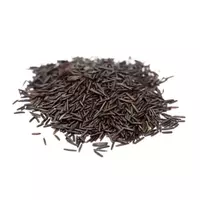Wild rice (black rice)

We think many have heard about wild rice or black rice, the benefits of which are spoken not only by nutritionists, but also by doctors. Wild rice is actually a species of annual plant that goes by the name Cicania aquatic or Zizania aquatica. The birthplace of a plant whose seeds are called wild rice (black rice) and are eaten is North America. It is worth noting that wild rice is currently cultivated in many countries of the world, including the Russian Federation.
Benefits of wild rice
The benefits of wild rice were also known to the indigenous people of North America, who for thousands of years included wild rice in their daily diet. water tsitsania grows, usually on the banks of water bodies, as well as rivers or lakes. In natural habitat or in the wild, the plant is common in subtropical climate zones in Canada and the United States. The beneficial properties of wild rice are directly related to the chemical composition of the seeds of the Tsitsaniya aquatic plant.
It is worth noting that the chemical composition of wild rice contains a decent amount of natural and digestible protein. Wild rice stands out from the group of other cereal crops with the highest nutritional value. The unique benefit of wild rice is that the composition of the product is enriched with natural amino acids, as well as vitamin B, magnesium, zinc, phosphorus, sodium and manganese. If we compare the properties of wild rice with brown rice, it can be noted that the composition of the first contains five times more folates than in the second.
It is important to pay attention to the calorie level of wild rice, which is at a fairly low level. The calorie content of wild rice is 101 Kcal when cooked, and the calorie content of raw cereal is 357 Kcal, which are per 100 grams of product. At this caloric level, wild rice has unique saturating abilities that allow the plant to be classified as a dietary food group. Wild rice is often referred to as Canadian or Native American rice, as the product has long formed the basis of Native North American diets.
Wild rice in cooking has become widespread. This product is especially appreciated by adherents of a healthy and balanced, as well as dietary diet. Wild rice can be served as a side dish or used as a savoury ingredient for salads, as well as soups, pilaf, casseroles, as well as desserts. Wild rice can become not only an excellent and tasty dish, but also a healthy food for human health.
wild rice (black rice) 101 kCal
Energy value of wild rice (black rice) (Ratio of proteins, fats, carbohydrates - ju):
Squirrels: 3.99 g (~ 16 kCal)
Fats: 0.34 g (~ 3 kCal)
Carbohydrates: 21.34 g (~ 85 kCal)
Energy ratio (b | y): 16% | 3% | 85%
 Español
Español Français
Français Português
Português Русский
Русский 简体中文
简体中文 繁體中文
繁體中文 日本語
日本語 한국어
한국어 العربية
العربية Türkçe
Türkçe Қазақ
Қазақ Deutsch
Deutsch Italiano
Italiano Українська
Українська
